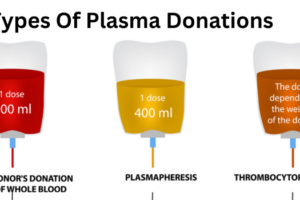
Introduction
Your paycheck stub is an important document showing how much you earned and how much was deducted. Understanding how to read and interpret your paycheck stub is essential for managing your finances and ensuring you’re being paid correctly. In this blog post, we’ll review the various components of a real paycheck stub and how to read and interpret them.
How to read and interpret Real Paycheck Stub
- Gross Pay, The first item on your paycheck stub is your gross pay, which is the amount you earned before any deductions or taxes are removed.
- Net Pay Next is your net pay, which you receive after all deductions and taxes are taken out. This is the amount that will be deposited into your bank account.
- Federal Income Tax Withholding Federal income tax withholding is the amount of money taken out of your paycheck to pay federal income taxes.
- State Income Tax Withholding If your state has an income tax, you will also see a line for state income tax withholding. This is the money taken from your paycheck to pay state income taxes.
- Social Security Tax Withholding Social Security tax is a federal tax used to fund Social Security benefits. You will see a line on your paycheck stub for Social Security tax withholding.
- Medicare Tax Withholding Medicare tax is another federal tax used to fund Medicare benefits. You will see a line on your paycheck stub for Medicare tax withholding.
- Other Deductions Your employer may also deduct money from your paycheck for other reasons, such as health insurance, retirement contributions, or union dues. These deductions will be listed separately on your paycheck stub.
- Year-to-Date (YTD) Amounts Your paycheck stub will also include year-to-date (YTD) amounts for each deduction and withholding. This shows how much money has been taken out of your pay this year.
- Pay Period Dates Your paycheck stub will also include the dates of the pay period for which you are being paid.
- Employer Information Finally, your paycheck stub will include information about your employer, such as the company name, address, and employer identification number (EIN).
Now that we’ve covered the various components of a paycheck stub let’s talk about how to read and interpret them
- Check the Accuracy of Your Pay The first step is to ensure that your pay is accurate. Check that the gross pay matches what you expected based on your hourly rate or salary. Then, subtract all the deductions and taxes to ensure your net pay matches your expectations.
- Review Your Tax Withholdings Review the federal and state income tax withholdings to ensure accuracy. If you have too much or too little tax withheld, you can adjust your W-4 form with your employer.
- Check Your Social Security and Medicare Tax Withholdings Make sure that the amounts withheld for Social Security and Medicare taxes are accurate based on your gross pay.
- Review Your Other Deductions If you have other deductions, such as health insurance or retirement contributions, make sure that the amounts are accurate and match what you expected.
- Understand Your YTD Amounts Review your year-to-date amounts for each deduction and withholding to ensure they are accurate and match what you expected.
- Keep Your Paycheck Stubs Keep your paycheck stubs for at least one year. This will be helpful if you need to file your taxes or have questions about your pay in the future.
One additional benefit of understanding your paycheck stub is that it can help you budget and manage your finances. By knowing exactly how much you’re earning and how much is being deducted from your pay, you can create a budget that considers your net pay and plan accordingly. For example, suppose you see that a significant amount of money is being deducted from your pay for taxes or other deductions. In that case, you may need to adjust your budget to ensure you have enough money to cover your expenses.
Another benefit of understanding your paycheck stub is that it can help you identify any errors or discrepancies in your pay. For example, if you notice that your gross pay is incorrect or that too much money is being withheld for taxes, you can bring this to your employer’s attention and correct it. This can help ensure that you’re being paid fairly and accurately.
In addition to understanding your paycheck stub, it’s also important to educate yourself on the laws and regulations that govern pay and payroll. This includes understanding minimum wage laws, overtime laws, and other regulations that may apply to your job and industry. By understanding your rights as an employee, you can ensure that you’re being paid fairly and that your employer is following the law.
Conclusion
In summary, understanding how to read and interpret your real paycheck stub is essential for managing your finances, ensuring you’re being paid accurately, and identifying any errors or discrepancies. By reviewing the various components of your paycheck stub, you can ensure that your pay is accurate, adjust your budget as needed, and stay informed about the laws and regulations that govern pay and payroll.






